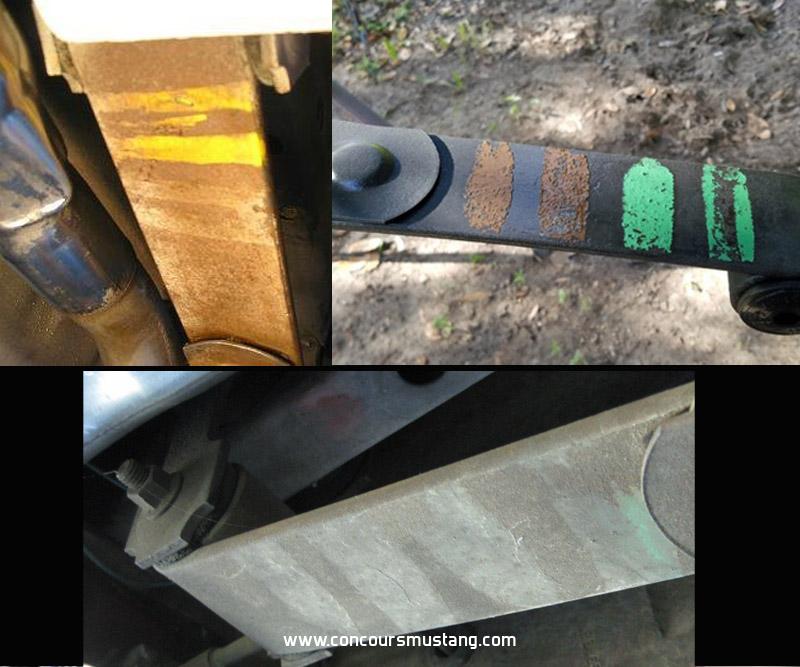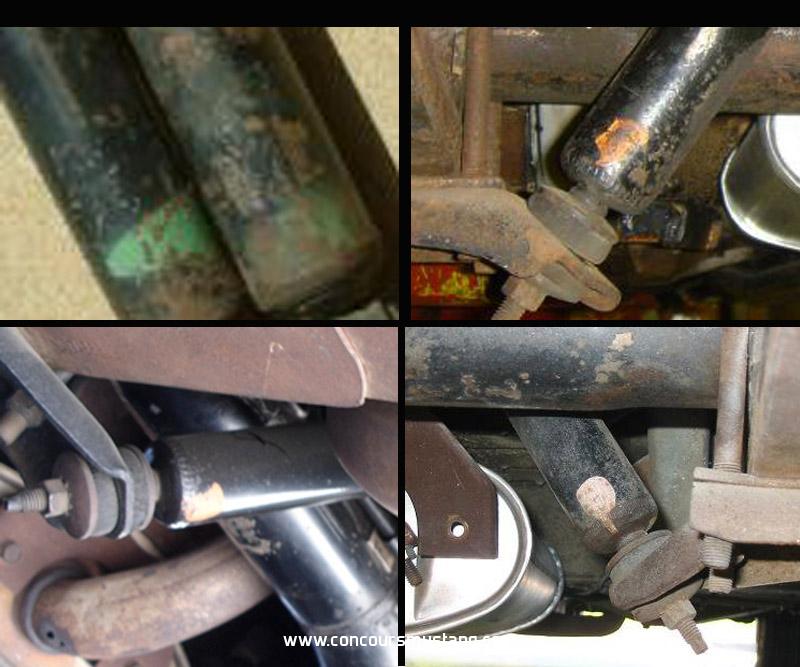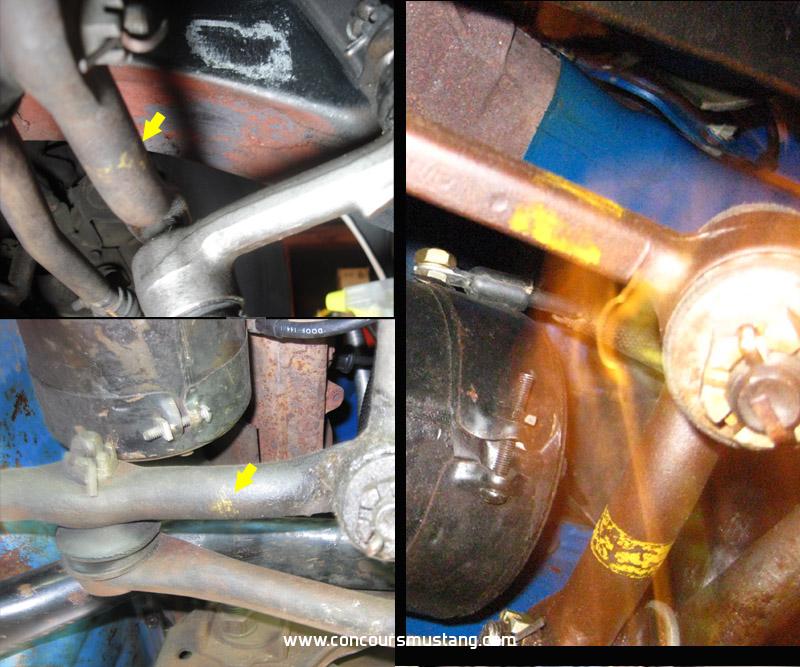As mentioned above the
rear springs - and the clamps are not of original designed nor finished and detailed like originals. Then the marks were applied (spaced out) on one of the middle leaves rather than the rear of the longest one as typically done. Here are a \few examples showing the pattern and location on originals. Not the same color combination on all of them as what would have been original for your car though poorly preserved the upper left is from an M code Mustang though all of the colors have not survived the years you can still make out the yellow 2 stripes
 Shocks
Shocks were typically marked in a different location than you have marked your examples. Here are four originals from different application but they do show IMHO some consistency. Starting, from what I've collected, in 70 we see some limited number marked with spray rather than brush but think that is a later thing at this point.

Passenger side steering. Again I think someone was confused in borrowing or copying someone else's or just made them up. The idler arm appears to be marked correctly with a yellow. Its often sloppier than presented but its there and the right color. The marking on the inner tie rod was likely on what ever source someone else found originally located on the center link between the last passenger side post and the hole for the passenger side tie rod connection. For others reading and viewing the yellow markings denote a power steering car. Manual steering cars would have had different markings

Going to ignore the
big ugly X on the rearend housing. Likely one of the most copied and applied marking we see other than things like made up paint inspector names and the ones from other plants. At one time it was thought that X meant that something had been checked or torqued but of course if one was found then two, three, four ........ were better. And as mentioned earlier. One get in a magazine or wins an award at a show and everyone has to have an X or multiple ones. The most common marking I have found on some San Jose rear end housings in the late 69s and 70 since that was the last year for classic Mustang production may be a second rotation number but most of the time they are so sloppy they are difficult to decode completely.
Sway bar - On this one it appears to be a better result. rarely see these placed as far towards the passenger end both the order is correct. Typically less paint was used and they were more centered. Have a fair number with the color reversed. Likely just a mistake of the youngest worker assigned to applying the colors or they just positioned them on the table incorrectly when applying the stripes.
In the last two pictures you show some paint marks I think are really off and not sure what you confused them with since there are so many different ways you could have come up with this incorrectly. Looks like a mix of the old yellow/green, passenger/driver side idea of the 90's crossbreed maybe with the color coded strut washers of 1970. Way off from my experience and findings. There was a marking of sorts in this general area where the forward strut washers where painted to (as currently believed) go with certain front end suspension pieces and the tires/wheel combinations that would be installed. But as we can see on your example its not the washers that were painted nor with they matching.
Hope this helps you while providing an example for others that will view this thread now and in the future